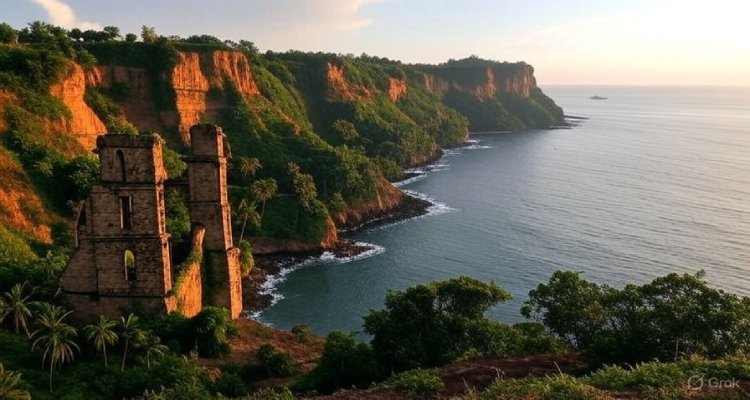India Adds Seven Natural Wonders to UNESCO Tentative List
India has added seven new natural heritage sites to UNESCO’s Tentative List, taking its total to 69. Here’s what it means for conservation and heritage.
Introduction: A Step Closer to Global Recognition
India’s cultural and natural wealth has once again found international limelight, with seven new natural heritage sites added to the Tentative List of UNESCO World Heritage Sites. This development not only highlights India’s deep geological and ecological diversity but also reaffirms the nation’s commitment to safeguarding heritage of outstanding universal value.
Context & Background
The UNESCO World Heritage Convention, adopted in 1972, establishes a global framework for the preservation of cultural and natural heritage. Today, India is already home to 42 World Heritage Sites, ranging from the Taj Mahal to the Western Ghats. However, for a site to be formally considered for this coveted recognition, it must first be included on a country’s Tentative List.
With these latest additions, India’s Tentative List now stands at 69 sites (49 cultural, 17 natural, and three mixed). The Archaeological Survey of India (ASI) continues to play the pivotal role as the nodal agency, diligently submitting nominations that adhere to UNESCO’s stringent evaluation criteria.
The Seven New Sites
The newly added natural heritage sites represent some of India’s most spectacular and scientifically significant landscapes.
-
Deccan Traps at Panchgani & Mahabaleshwar, Maharashtra
Among the largest volcanic features on Earth, these lava flow plateaus within the Koyna Wildlife Sanctuary are key to understanding planetary-scale volcanic activity. -
Geological Heritage of St. Mary’s Island Cluster, Karnataka
Famous for its rare columnar basalt formations, these islands are a geological time capsule dating back nearly 85 million years. -
Meghalayan Age Caves, Meghalaya
The caves, particularly Mawmluh Cave, are globally significant as the official reference point for the beginning of the Meghalayan Age around 4,200 years ago, marking major climatic shifts. -
Naga Hill Ophiolite, Nagaland
Composed of unique oceanic crustal rocks, the region provides a rare opportunity to study plate tectonics and oceanic-continental collisions. -
Erra Matti Dibbalu (Red Sand Hills), Andhra Pradesh
Located near Visakhapatnam, these striking red sand dunes carry invaluable clues to paleo-climatic changes and coastal geological evolution. -
Natural Heritage of Tirumala Hills, Andhra Pradesh
This site showcases the Eparchaean Unconformity, a natural gap in geological records spanning millions of years, along with the naturally formed rock arch Silathoranam, estimated to be 1.5 billion years old. -
Varkala Cliffs, Kerala
Stretching along Kerala’s coast, these cliffs display the Warkalli Formation from the Mio-Pliocene period, with their springs and erosional landforms being both scientifically and visually remarkable.
Why This Matters
Experts emphasize that these additions underline India’s growing emphasis on geodiversity conservation alongside historical and cultural preservation.
Dr. Ramesh Chand, a geologist with the Geological Survey of India, explains: “While monuments reflect human history, geological heritage captures Earth’s own story. Protecting such sites ensures we safeguard natural archives essential for future climate, ecological and scientific studies.”
Local communities too see this as an opportunity. The inclusion boosts visibility for eco-tourism and sustainable livelihoods in these regions, provided safeguards are maintained against over-commercialization.
Impact and Implications
Being placed on the Tentative List does not automatically guarantee inscription, but it is the first and most crucial step before global recognition. The process involves years of assessments, dossier submissions, and expert evaluations by UNESCO’s advisory bodies such as ICOMOS and IUCN.
For India, the impact could be multidimensional:
-
Global Prestige: A higher tally of World Heritage Sites elevates India’s cultural and natural profile on the world stage.
-
Tourism Boost: Recognized heritage sites often attract more international tourists, thereby aiding local economies.
-
Conservation Safeguards: UNESCO recognition enhances pressure and accountability for better preservation and management practices.
-
Scientific Value: Formal recognition encourages more international research collaborations, shedding light on Earth’s history embedded in these landscapes.
However, experts caution that inclusion must be followed by rigorous management plans to prevent ecological degradation. UNESCO also monitors listed sites closely, with the authority to flag them as “in danger” if conservation standards fall short.
Conclusion: Preserving Earth’s Memory in Stone
India’s journey to expand its World Heritage portfolio reflects both pride and responsibility. The seven newly enlisted natural sites are not just geological wonders; they are chapters in Earth’s own autobiography. As India advances towards possible inclusion on the main UNESCO World Heritage List, the success of this initiative will depend on balancing conservation with sustainable development.
The inscription of even a few among these sites would mark a milestone—anchoring India’s legacy of safeguarding heritage that belongs not only to a nation, but to all of humanity.
Disclaimer : This article is for informational purposes only and is based on publicly available sources. It does not represent official UNESCO communication or government policy.











